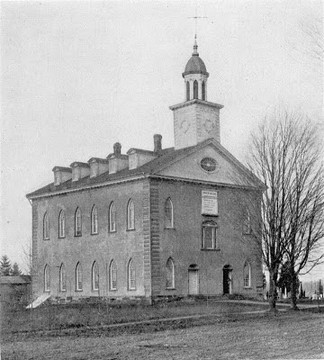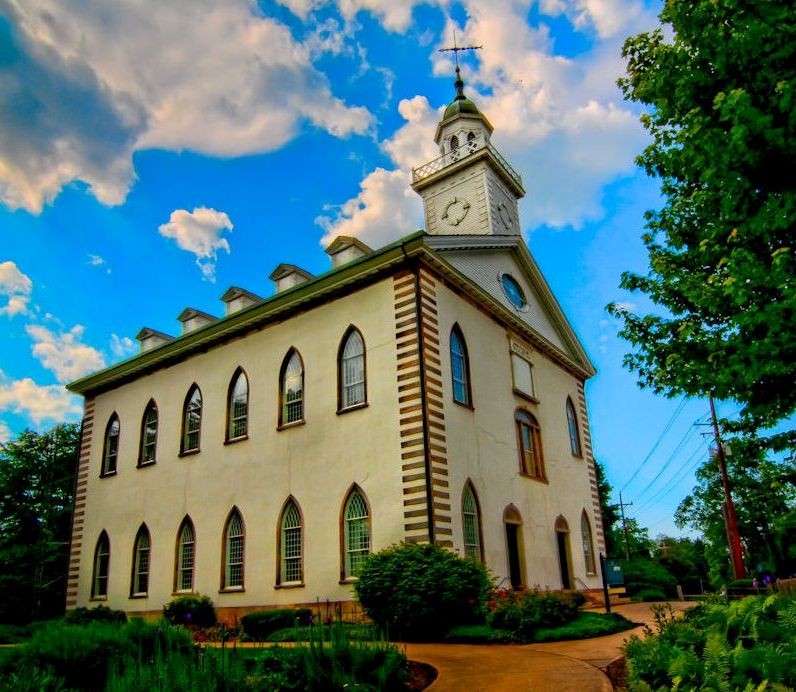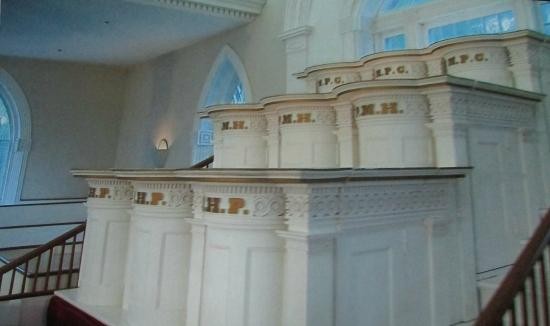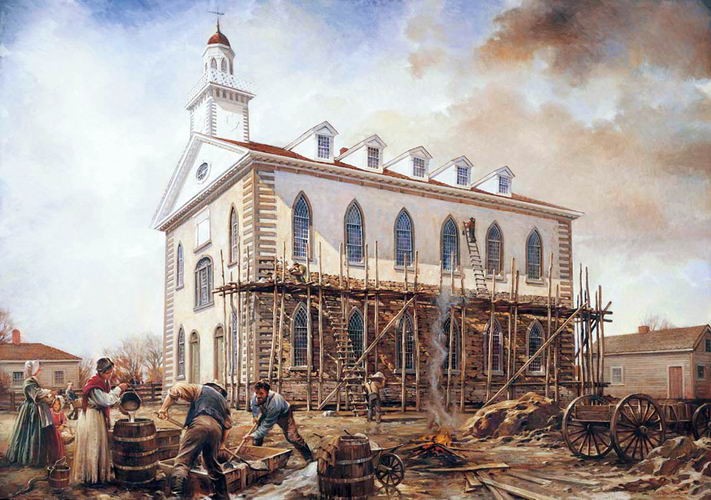Kirtland Temple
Introduction
Text-to-speech Audio
Images
Kirtland temple in the early 1900s

Kirtland temple today

Pulpits in the temple. Here is where Jesus Christ, Moses, Elijah, and Elias are said to have appeared to Joseph Smith and Oliver Cowdry.

Painting depicting the construction of the temple.

Backstory and Context
Text-to-speech Audio
Beginning in 1831, the founder of the Church of Christ, Joseph Smith, as well as his followers, began congregating in Kirtland and the area surrounding it, and soon after, the members of the movement began constructing a temple for worship, as per instructions that Joseph Smith said to have received through divine revelation. Construction stretched out for several years at the base of Gildersleeve Mountain, with church members donating supplies for the needed construction, and on March 27th, 1836, the Kirtland Temple was completed and dedicated by Smith with a lengthy dedication service. This was the first temple to be built by the Church of Christ (later the Latter Day Saints).
Not long after the completion of the Kirtland Temple, the ownership of the Temple began to waver due to schisms within the Church of Christ structure. In 1838, Joseph Smith and those loyal to him fled the state of Ohio, and for several years, the temple was used by the Western Reserve Teacher’s Seminary. For years following the assassination of Joseph Smith in 1844, different sects of the Latter Day Saints vied for control of the temple, but ultimately, the Reorganized Church of Jesus Christ of Latter Day Saints (now known as the Community of Christ) gained legal control of the building by 1901. The Kirtland Temple was used for regular services until the 1950s, at which point it was decided that the temple should be made a preservational site. A new church was constructed for regular worship close by, and to the present day, the Community of Christ has made continuous efforts to preserve the Kirtland Temple.
